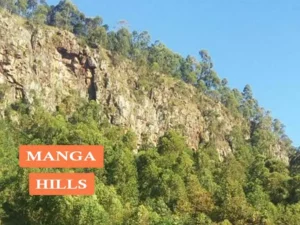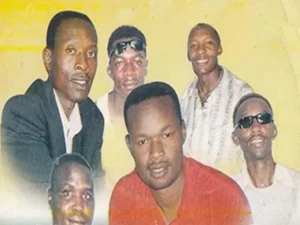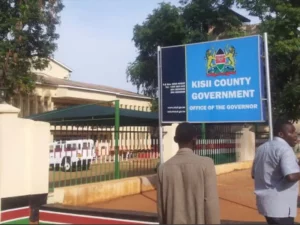Soapstone carving is a multi-billion business empire with several craftsmen, brokers, and suppliers in the worldwide supply chain. The ever rising demand for creative artwork rely on Kenyan soapstone in Kisii County. Even so, this white gold business remains shaky, especially for the people of Tabaka. We look at the untold stories with a critical focus on soapstone mining.
Large mineral deposits and skilled craftsmen continue to promote Kisii soapstone products in the worldwide marketplace. These Kenyan hand crafts are particularly unique and precious. Indeed, tourists love them for their decorative appeal and priceless display of art.
Top 20 Facts about soapstone in Kisii County
A trip to Suneka on a sunny day having clear skies is all you need to refresh your memories with an embrace of sparky-white sun reflections.
Many of those who tour the glorious Suneka mineral site no doubt pump into the following observations.
1. Tabaka soapstone is the only natural resource in Gusiiland
Kisii is not only a land of bananas but also huge soapstone deposits. Notably, the mineral is one of its kind in the larger Gusiiland.
Soapstone in Kisii County is for economic use and artistic drawing of the local culture and traditions.
2. African Kisii soapstone is the largest deposit in the world
Soapstone is a rare mineral with only a couple of deposits in Africa. Firstly, Tabaka is home to the largest and most valuable types of soapstone.
Secondly, the list of soft stones in Zimbabwe extends beyond soapstone to include serpentine, selenite, and steatite.
Hill slopes, rivers, and valleys are where you will find the abundance of these soft rocks.
Nonetheless, Soapstone in Tabaka is the most famous with deep rock deposits and hands on artisans.
3. Soapstone Kenya comes in at least 3 different colours
Kisii soapstone at Tabaka is an attractive natural mineral of multiple colours such as white, pink, and black.
While white and pink coloured soapstone are softer for carving, the black ones are way harder and difficult to work with.
4. Tabaka soapstone carving is the main economic activity for the locals
Soapstone business is a thriving economic activity for at least 30,000 locals and some more in the value chain.
The stony neighbourhood makes it almost impossible to practise farming reliably.
Therefore, mining Kisii soapstone is beneficial to the local community, and even those in other parts of the world.
5. Home based enterprises are major owners of Tabaka soapstone mines
Ownership of soapstone in Kisii largely fall in the hands of home based enterprises.
Further stats indicate that the residents of Nyabigege Village in Tabaka depend on soapstone carvings for their livelihood.
Kisac Company, Site Enterprises, and Nyatike Miners Association are also key players in the production and supply chain.
6. Most residents of Tabaka are living below the poverty line
Most households at Tabaka do not have access to basic social amenities. These include electricity, clean water, and security.
Sadly, even those directly involved with soapstone mining and carving are still struggling with abject poverty.
Poor organisation within the value chain is largely to blame for poor pay among site workers.
7. Tabaka carvers living from hand to mouth as brokers keep profits
Carving soapstone is both demanding and exhausting. It takes it so much effort, skills, talent, and time to produce marketable items.
Brokers on the other hand push these items on the marketing and distribution chain.
It is concerning how brokers are becoming richer at the expense of poor sculptors; still in a hand to mouth lifestyle.
8. Mining Tabaka soapstone is risky amid efforts to modernize
Heart breaking stories of soapstone miners buried alive at Tabaka have recently reduced but not completely.
For this reason, the local government of South Mugirango Constituency has moved with safety programs.
These are particularly a priority to make sure that injuries and deaths are reduced on the site.
9. Failed promise of a soapstone factory affecting production
Kisii soapstone products dominate the international market with a flood of carefully designed artefacts.
The need for a soapstone factory remains a dream for locals already struggling to achieve production autonomy.
A factory remains an immediate need for sustainable quality and quantity of soapstone products.
10. Oppressive supply and value chain partners still a challenge
Curio Shop owners and those in the supply chain buy soapstone carvings at throw away prices and sell them as huge profits.
The inequality in sharing of profits works to the advantage of middle men as opposed to the hands on soapstone workers.
11. A fighting for women rights at the Tabaka soapstone mines
Gender based roles at the famous Tabaka soapstone fields are slowing disappearing.
More women are now taking laborious and well-paying roles such as stone mining and carving.
It is not long ago that women were only excluded in the washing finished soapstone products and selling them in nearby curio shops.
12. Women involvement at the soapstone mines increasing household revenue
Families where both parents are working at the mines are likely to earn more money because of joint efforts.
Women involvement at the mines is becoming a necessity because of economic changes – as much as it is not welcome in the Kisii customs and traditions.
13. The demand for high quality soapstone products is exceeding production
Low wages is sending more skilled artisans away from the mines creating a supply shortage of designer soapstone products.
As a result, the number of highly skilled soapstone carvers is shrinking fast against a rising demand for valuable artefacts.
14. Inefficient homebased soapstone enterprises frustrating profitability
Homebased soapstone enterprises do not necessarily own sufficient skills to manage and control profits.
A lack of carving and marketing skills end up attracting little income for a natural resource that should otherwise change lives for good.
15. Local tourism providing a limited market space for soapstone carvings
A limited market reach is a huge setback to the upcoming soapstone carvers, especially those without direct links to the international market.
These carvers often accept little pay from local tourists for products with a better price tag in overseas markets.
16. Tabaka soapstone carvings is more involving than you may think
The 8 steps of soapstone carving include mining, sculpting, sanding, washing, painting, packaging, marketing, and selling.
Every one of these eight steps are labour and skill intensive requiring experience and patience for a high quality soapstone product.
17. Expensive marketing a key challenge for local investors
Established companies such as Kisac Fair Trade Soapstone decry costly marketing.
Speaking to Kisii Hot TV, Peter Ombasa confirmed that marketing is the main challenge facing Kisac.
Related organizations have also cited costly marketing methods as the main cause of a disorderly supply chain.
18. Soapstone mining an untapped opportunity in Kenya
Kenyan soapstone galleries are the pride of Africa in overseas markets. These artefacts are unique for their prints and excellent finish.
There, however, remains a huge market gap with a potential of boosting the local economy.
19. Soapstone sculptures enjoy a ready market in Europe and the US
The white gold of Kisii accounts for 90 percent of all artefact exports. Among the best of Kenyan soapstone sculptures include bowls, eggs, and countertops.
Most of these Kenyan soapstone products enjoy a ready market in the European countries and the United States of America.
20. The economic value and uses of soapstone are not limited
The uses of soapstone include carving and other types of handcrafting.
The soft mineral is also becoming popular in architectural applications such as floor tiles, furniture, counter tops, interior surfacing, and shower bases.
Kisii soapstone is preferable for its adaptable chemical and physical properties. The ability to radiate and absorb heat is specifically outstanding.
What is soapstone?
Soapstone also called soaprock or steatite is a talc rich mineral under metamorphic rock classification.
Talc is the main reason why soapstone takes after the characteristics of a soap bar. Besides, soapstone contains a considerable portion of magnesium.
Overall, soapstone is way softer and heat friendly for general use by architectures and artisans.
The abundance of soapstone in Kisii County is a source of livelihood for the locals in Kenya. It is a reliable source of income for carvers and those in the supply chain network. Tabaka soapstone mines deserve greater attention for their untapped economic opportunities.
I am a digital creative cum graduate Mechatronics Engineer from Dedan Kimathi University; with over a decade of experience in computer applications, networking, website design, graphic design, blogging, CAD, and robotics. Besides, I coach on-demand digital skills at Rejnac Masterclass.






